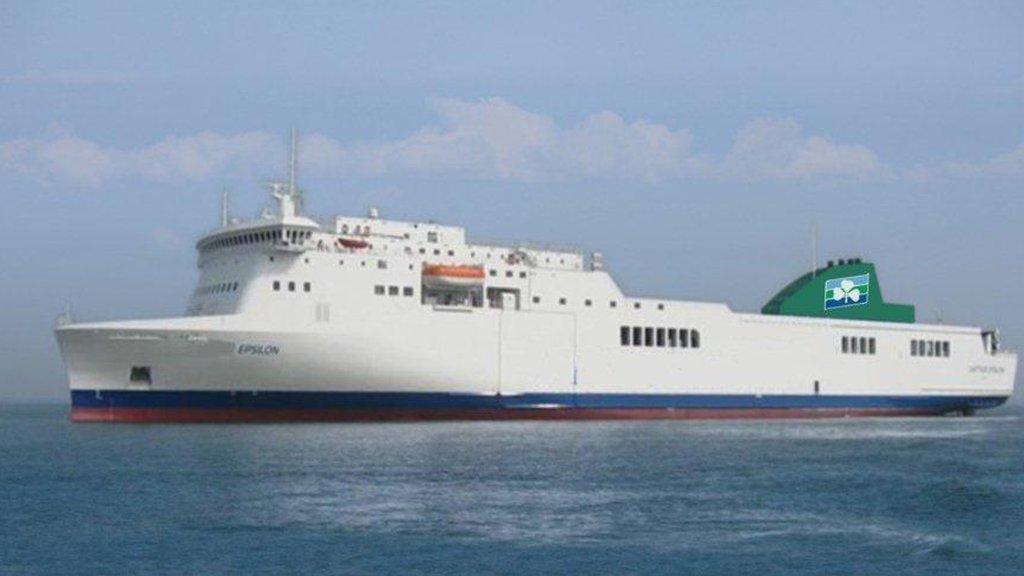Ferry company marks 21 years of Holyhead to Dublin route
- Published
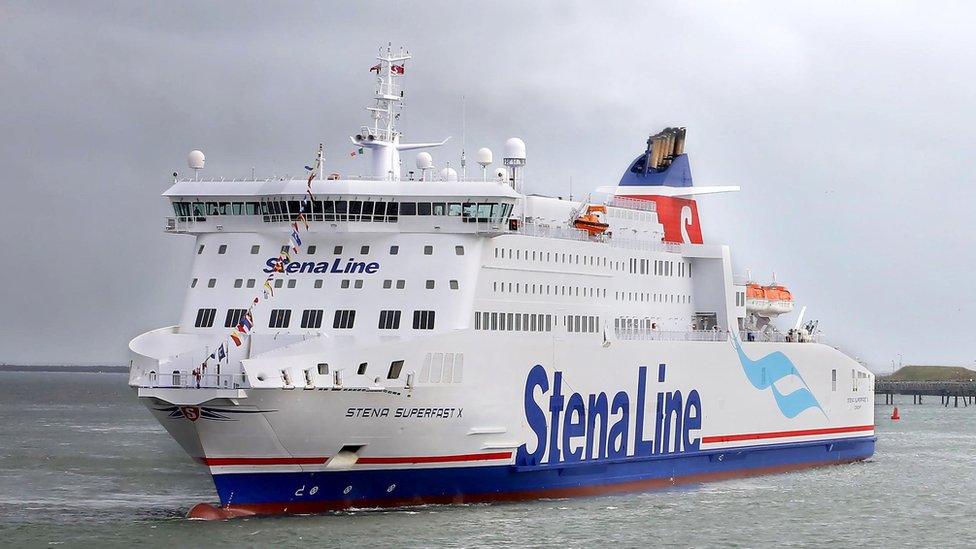
More than nine million passengers and 42,000 trips across the Irish Sea.
No wonder the crews who spend their days - and nights - braving the notoriously rough waves between the Republic of Ireland and Wales are in the mood to celebrate.
And the big occasion? It is 21 years since the ferry giant Stena Line set sail on its Holyhead-Dublin route.
From its very first ship carrying just 120 lorry drivers back in 1995, through to its latest ships each capable of taking more than 1,000 passengers across the Irish Sea, it has been two decades of constant change and challenge.
One of those who has witnessed it all is Alan Williams, the duty customer and operations manager of Holyhead - now the UK's second busiest passenger port.
Alan Williams has worked at Holyhead port for 37 years
"Lots of changes - big changes. Trying times, occasionally, but very interesting times and for me - they have been good times," he tells me as we walk down to the port waterfront, where the Superfast X is tied up.
"This bit we are standing on now used to be water. It has been land-filled to make standage for lorries and trailers.
"Ships have got bigger. The first ship on this route in 1995 was the Stena Traveller with 120 passengers - the ship behind us, the Stena Superfast X - can carry 1,100 passengers. So big changes - yes."
It is not the only service operating out of Holyhead. There is commercial rival Irish Ferries on the route to Dublin too.
It operates the Ulysses, which when launched in 2000 was the largest passenger ferry in the world, able to carry 2,000 passengers. It also runs the Jonathan Swift, a high-speed catamaran that can make the crossing with 200 cars in less than two hours.
It was something Stena Line could also boast until 2015, when it ended its own superfast HSS Explorer service between Holyhead and Dun Laoghaire, blaming high fuel prices and the loss of booze cruise passengers after duty-free alcohol sales were scrapped for travel in EU countries.
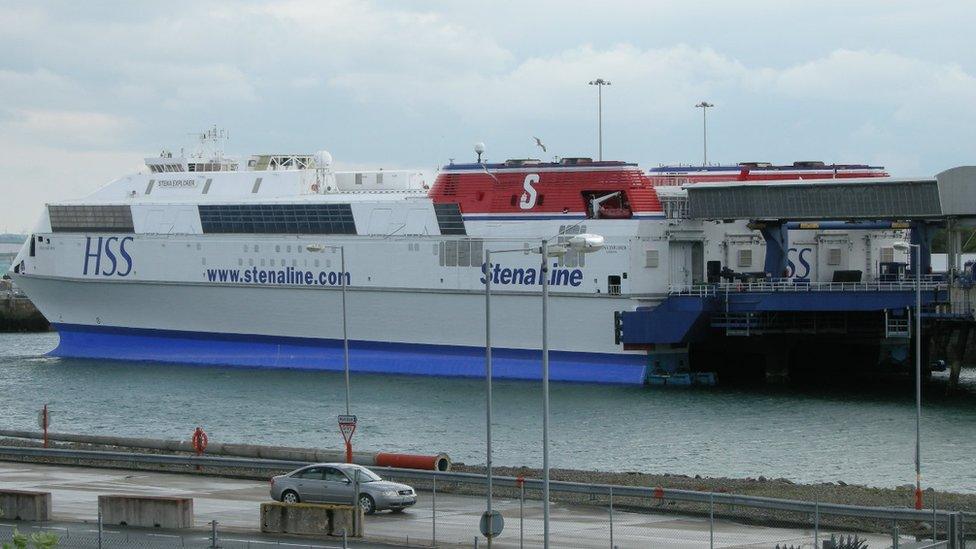
HSS Explorer - long gone - its pier is now being demolished
But Holyhead port, which is also operated by Stena, never stood still. It now sees more than two million passengers travel through the town every year, making it the second busiest passenger ferry port in Britain - beaten only by Dover.
Of course, none of this comes as a surprise for Mr Williams. He has been at the port since 1979, starting as a customs clerk.
He has seen Stena Line reinvest in new ships like the Superfast X, as well as develop the port facilities themselves.
But he believes many of the challenges facing the 450-strong Stena workforce remain the same.
"The weather - that's the biggest challenge in this job.
"The captains have a huge responsibility getting the ships in and out in the bad weather, the guys on the ground who load the ships, the tug drivers who put the lorries on - they've all got to work in all sorts of weather.
"They make the port and job easy because they know what they are doing."
The breeze is picking up and whipping white peaks onto waves breaking against the harbour walls as I make my own way onboard the Superfast X as what they call a "footie" - a foot passenger.
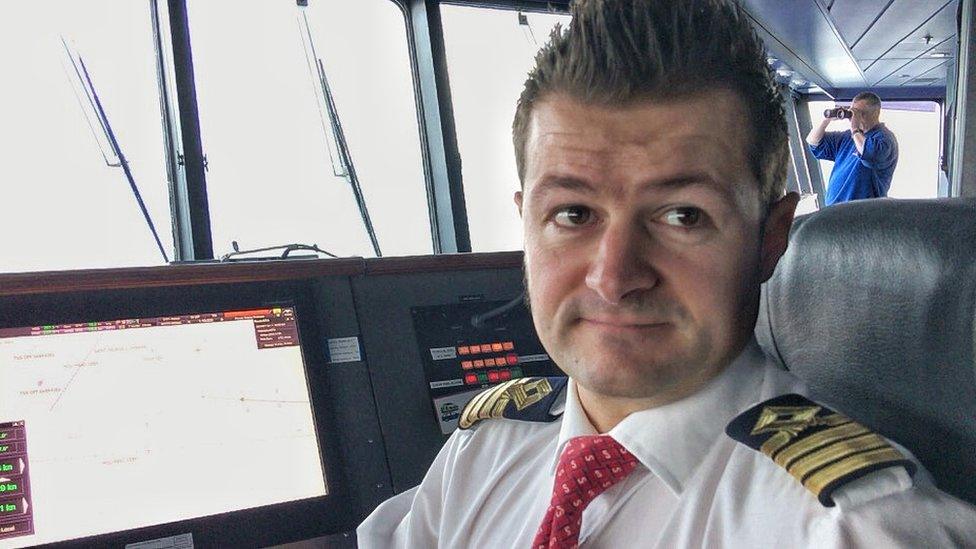
On the bridge, the ship's master, its captain for the crossing, is Mark Roberts.
Like so many of the staff onboard and at the port, he is local to the island of Anglesey, living just a few miles from Holyhead itself at the seaside beauty spot of Trearddur Bay.
He has been at sea himself for as long as the Holyhead-Dublin route - and with Stena for much of the past decade.
"The seafaring trade is worldwide, so to find something on your doorstep is great," said captain Roberts.
This is the already the second crossing of the day for the two Stena ships on the route - the Stena Adventurer left port just after 02:00 and is already making the return journey from Dublin.
Downstairs from the bridge, breakfast service is in full swing in the restaurant. But sous chef Neil Evans is already hard at work on the lunch menu when I get to step behind the scenes and into the ship's galley.

This is a full-blown commercial kitchen - and it needs to be.
In 21 years, it has served an eye-watering 1.3 million fried breakfasts, 1.8 million portions of chips and 2.9 million main meals. It is a lot of cooking - and 31-year-old Neil Evans from Holyhead takes it in his stride - whatever the weather and waves throw his way.
"It's different. But it's like a family," he tells me as he stirs a giant pan of chicken and peppers.
"You're working week-on, week-off. So, busy on your week-on, but you get to do what you want on your week off. Work hard and then play hard."
How do ferry staff on the Holyhead-Dublin route avoid sea sickness?
Virtually the entire crew are on a similar pattern - 12-hour days, waiting for changeover day on Wednesday.
In the meantime, the ship is not just their office - it is also their home.
Tucked out of sight of the passenger cabins are those reserved for the crew, along with a TV lounge and a small gym.
"I don't mind being away from home - it keeps me out of trouble," jokes Neil.
"The week here goes so fast - especially in the summer - the weeks just fly by. We all get on great too - which is handy."
Harry Hall is the senior engineer onboard Stena's Superfast X ship
And just as every passenger or truck driver stepping on board is different - so is every day.
It means the entire crew have seen some pretty strange things in their time.
For port chief Alan Williams, it is seeing entire aircraft or locomotive train engines loaded on to the ships.
For sous chef Neil - it is slightly more exotic: "A giraffe on the car deck. It was going to Dublin Zoo - you don't see that every day."
The ship's captain can pull rank on that though: "An elephant," he laughs.
Giraffe or elephant, one thing is true - it is a mammoth task to keep ferries this size running around the clock, whatever the weather.
- Published13 June 2016
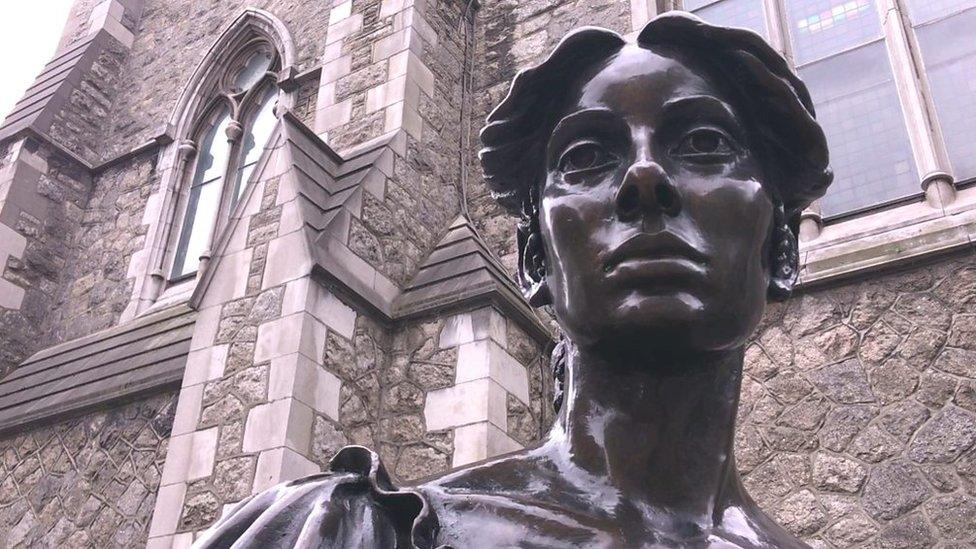
- Published25 March 2015
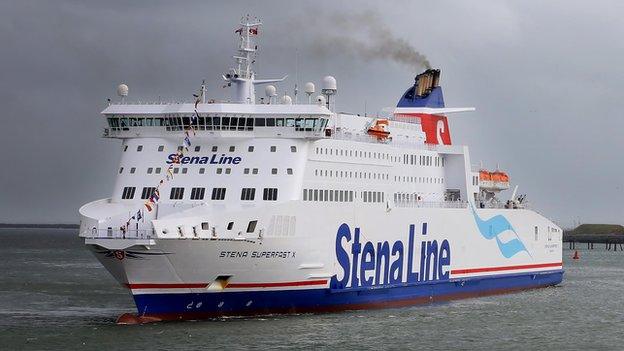
- Published4 February 2015
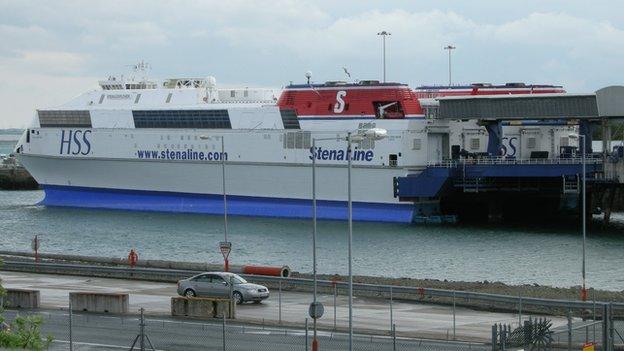
- Published9 December 2014
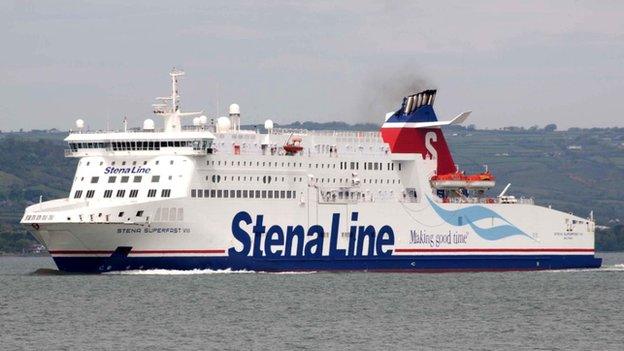
- Published7 November 2013
